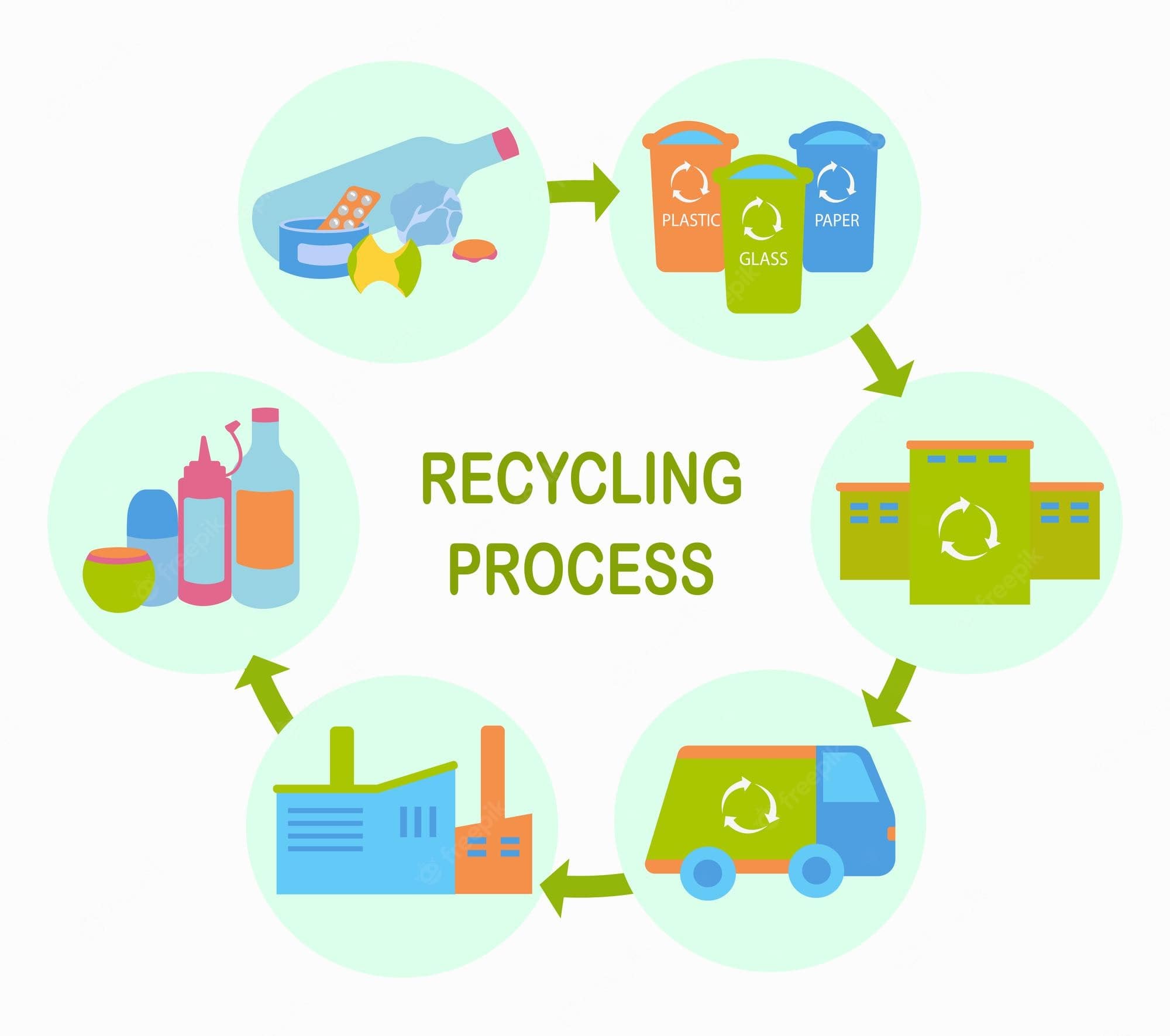Let’s talk about the process of recycling plastic…
Plastic is considered to be a harmful material to the environment. It can take up to 1,000 years to decompose, leach harmful chemicals into the soil and water, and clog landfills. And each year, millions of tons of plastic are being produced and dumped on the planet.
The good news is that we can reuse it with a simple plastic recycling process to help reduce some of its environmental damage. But before we get into the process, here are a few key reasons on why you need to do it:
3 Reasons Why Recycling Plastic Matters
1. Helps to conserve energy
The process of recycling plastic uses less energy than manufacturing new plastic products from scratch. For example, it takes significantly less energy to recycle a pound of PET (polyethylene terephthalate) than it does to create a pound of fresh PET.
2. Reduces greenhouse gas emissions
Recycling plastic helps to reduce greenhouse gas emissions by replacing the need for fossil fuels. For instance, recycled PET can be used to create new products like fiberfill for winter jackets and insulation for homes.
These products would otherwise be made from virgin petroleum, a non-renewable resource that emits harmful greenhouse gases when extracted and processed.
3. Helps to preserve resources
Recycling plastic reduces the strain on our finite supply of fossil fuels and decreases pollution and energy consumption. Resources such as water and oil are used in the production of plastic, so recycling helps to preserve them.
Now that are you familiar with the benefits of recycling plastic, let us go through a process of recycling plastic:
The steps involved in recycling plastic are:
Step 1 — Collection
This is the first step in the process of recycling plastic. First of all, the plastic waste is collected by different methods depending on the type of plastic and where it’s being recycled.
Plastic bottles and containers can be collected from homes and businesses through curbside recycling programs. Larger pieces of plastic waste, like those used in packaging or manufacturing, may be collected directly from businesses.
Step 2 — Sorting
Once collected, the plastic waste is sorted by type of plastic. Most recycling facilities use a system called the Resin Identification Code, or RIC, to sort plastics.
The RIC is a symbol (usually found on the bottom of a plastic container) that indicates what kind of plastic the item is made of. This is important because different types of plastic must be recycled using different processes. And sorting allows us to do that.
Step 3 — Shredding
After sorting, the next step is shredding. Shredding is done to make the plastic easier to recycle. The shredded plastic is then cleaned and melted down. And the shredding process usually includes a machine that cuts the plastic into small pieces. Depending on the type of plastic, these machines can be different.
By breaking down the plastic into smaller pieces, we can also find any remaining impurities. It’s particularly true of pollutants like metal, which may not have been removed by washing yet can be readily collected with a magnet at this time.
Step 4 — Melting
The next step in the process of recycling plastic is melting. The shredded and cleaned plastic is melted down in a furnace. The molten plastic is then poured into a mold. Depending on the type of plastic, the melting temperature can be different. The melting process can also help to remove any remaining impurities.
Step 5 — Pelletizing
Pelletizing is the process of turning melted plastic into pellets. Pellets are small, round pieces of plastic that can be used to create new products. These pellets are then used to create new plastic products.
Step 6 — Recycling
The last step in recycling plastic is recycling. Recycled plastic can be used to create new products, such as bags, bottles, and packaging.
Overall, the process of recycling plastic is about recovering waste or scrap plastic and reprocessing it into a useful product. It helps to reduce energy consumption, greenhouse gas emissions, and pollution.

